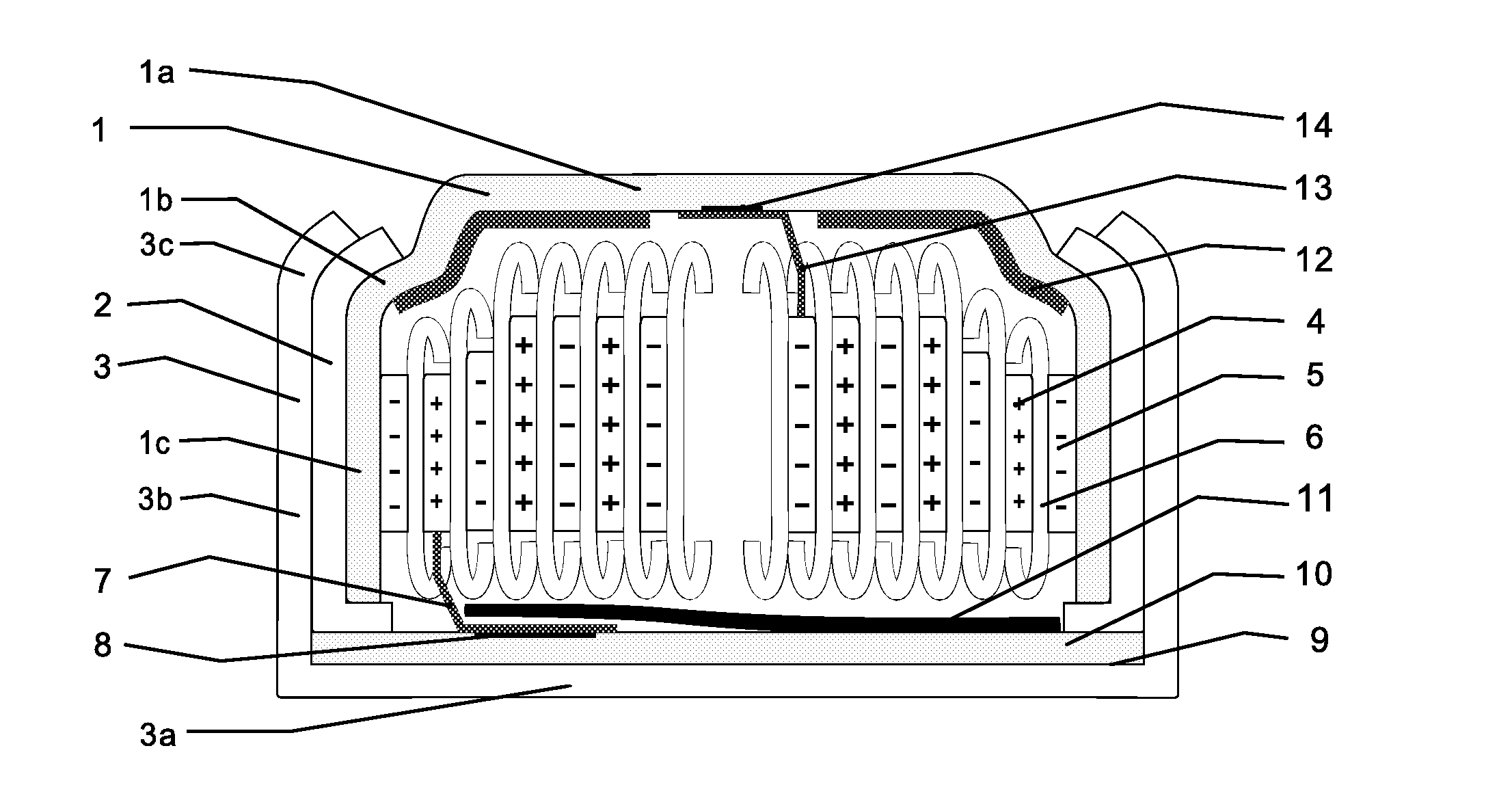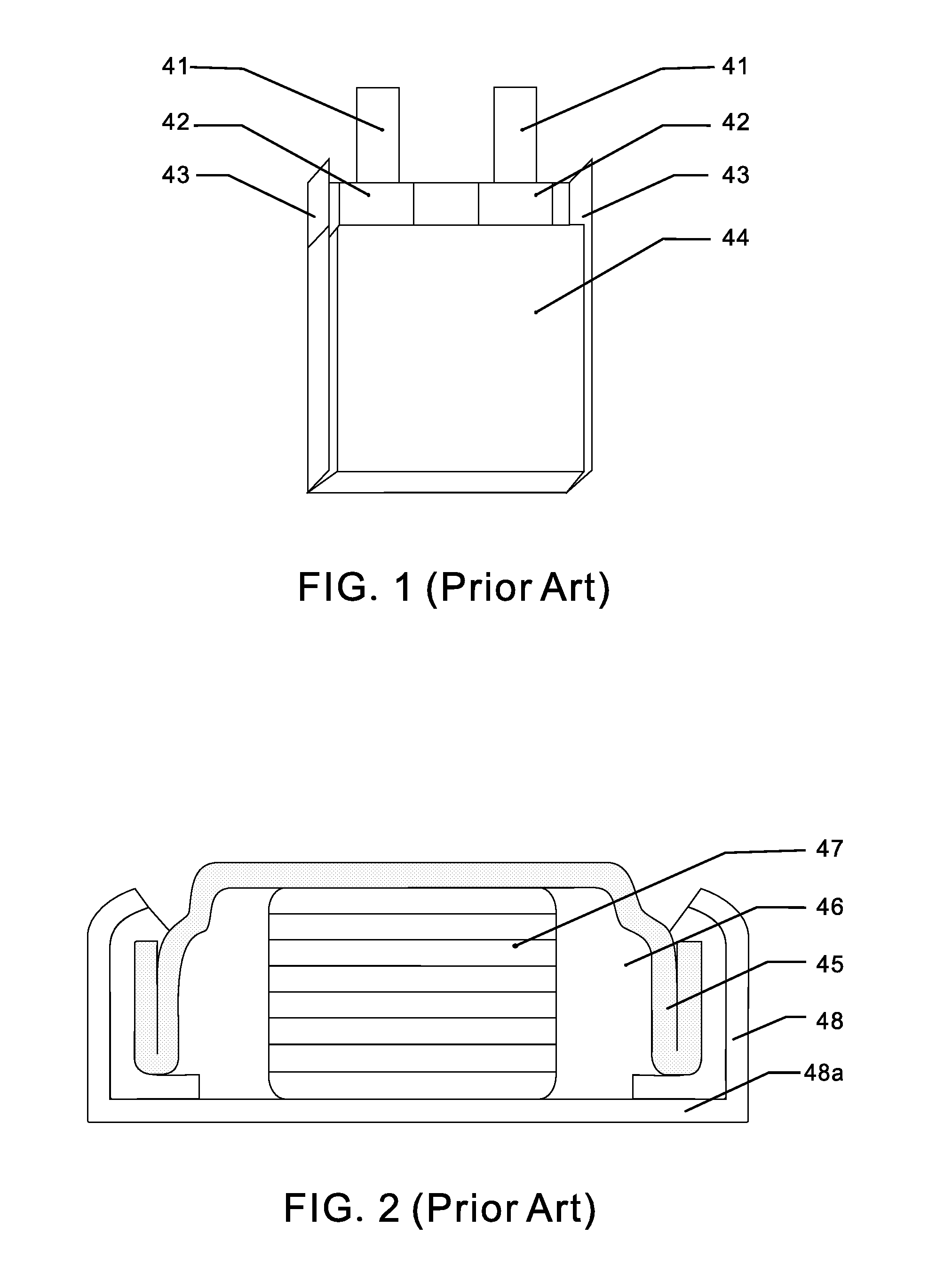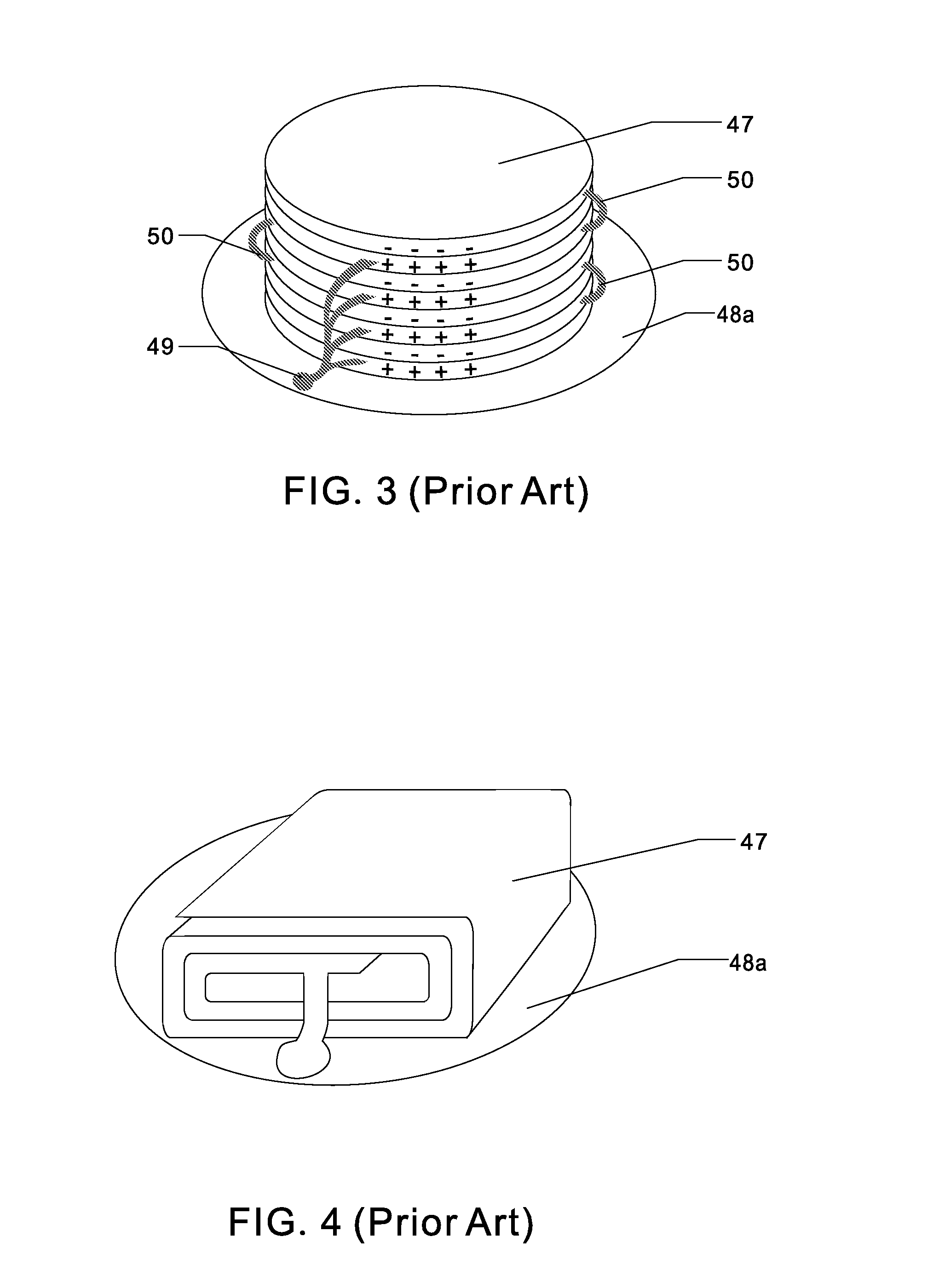Rechargeable lithium ion button cell battery
a lithium ion battery and button cell technology, applied in the direction of cell components, final product manufacturing, sustainable manufacturing/processing, etc., can solve the problems of not having space to contain a big battery, not suitable for lithium, and soft pouch batteries are not ideal candidates for very small electronic devices
- Summary
- Abstract
- Description
- Claims
- Application Information
AI Technical Summary
Benefits of technology
Problems solved by technology
Method used
Image
Examples
example 1
[0047]As per FIG. 5, inventors of the present invention manufactured some lithium-ion rechargeable button cell size 7840 at diameter 7.8 mm height 4.0 mm as per the details disclosed in the above description.
[0048]Battery casings 1 and 3 are made by stainless steel grade 316, 304 or 430, preferably 304, of 0.10 mm to 0.15 mm thick, preferably at 0.125 mm thick. The anode casing side wall 1c is single wall. Gasket 2 is made by injected polypropylene at 0.06 mm to 0.15 mm thick, preferably at 0.12 mm thick.
[0049]Vacuum mix the cathode lithium-intercalating materials preferably Li(Ni1 / 3Mn1 / 3Co1 / 3)O2 and other functional additives in NMP solvent thoroughly, and coat the slurry double sided on the aluminum foil usually 10 um to 25 um thick preferably 16 um thick, heat to dry the coated materials and press it by a calendering machine to get the desired thickness usually 0.1 mm to 0.2 mm. The coating is not on full area of the aluminum foil leaving a blank area uncoated for the battery tab...
example 2
[0053]As per FIG. 8, most of the parts, materials and procedures are the same as example 1, except that the cathode tab 7 is longer and welded directly to the inside of 3a, and folded when put the outer casing 3 closing together with the sub-assembled electrodes and inner casing 1. The insulation washer 11 is attached on the electrodes roll edges at the outer casing side, after the electrolyte is filled. The material of 3a is using stainless steel grade 304 in this example, and it could be other grade stainless steel, or other materials like aluminum coated or laminated clad metals, or other anti-corrosion material coated metals.
[0054]The 7840 battery made in this example has the similar performance as example 1, except that the remaining capacity is lower than example 1 after same number of cycles. Estimate it will have 400 to 600 cycles to 80% remaining capacity.
PUM
 Login to View More
Login to View More Abstract
Description
Claims
Application Information
 Login to View More
Login to View More - R&D
- Intellectual Property
- Life Sciences
- Materials
- Tech Scout
- Unparalleled Data Quality
- Higher Quality Content
- 60% Fewer Hallucinations
Browse by: Latest US Patents, China's latest patents, Technical Efficacy Thesaurus, Application Domain, Technology Topic, Popular Technical Reports.
© 2025 PatSnap. All rights reserved.Legal|Privacy policy|Modern Slavery Act Transparency Statement|Sitemap|About US| Contact US: help@patsnap.com



